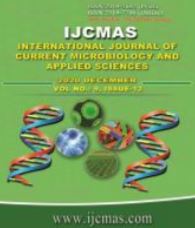


 National Academy of Agricultural Sciences (NAAS)
National Academy of Agricultural Sciences (NAAS)

|
PRINT ISSN : 2319-7692
Online ISSN : 2319-7706 Issues : 12 per year Publisher : Excellent Publishers Email : editorijcmas@gmail.com / submit@ijcmas.com Editor-in-chief: Dr.M.Prakash Index Copernicus ICV 2018: 95.39 NAAS RATING 2020: 5.38 |
Mango (Mangifera indica L.) occupies a pre-eminent place amongst the sub-tropical fruits grown in Jammu region and is extensively grown crop in this region. The horticulture crops are perishable in nature and they require special attention in their harvesting, handling, packaging, storage and processing operations, therefore post-harvest management practices of a crop is done to prolong the storage life, freshness and an attractive appearance. A study was conducted on 80 mango growers which were selected on the basis of proportionate random sampling were interviewed using a structured interview schedule. The results showed that one-third of respondents were noticed to fall under medium age interval and half of the respondents were having small landholdings. Rain water was the main source of irrigation. Area under mango orchards was 1.23 ha. Adoption of post-harvest management practices like storage facility were significantly determined by landholdings, number of trees, distance from market and artificial ripening were significantly determined by education, distance of market and extension contact. Education affected the knowledge of the respondents regarding post harvest management practices.
 |
 |
 |
 |
 |